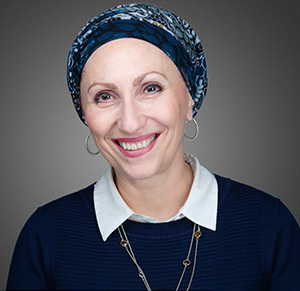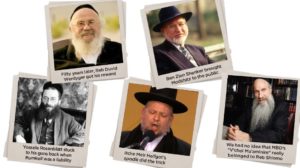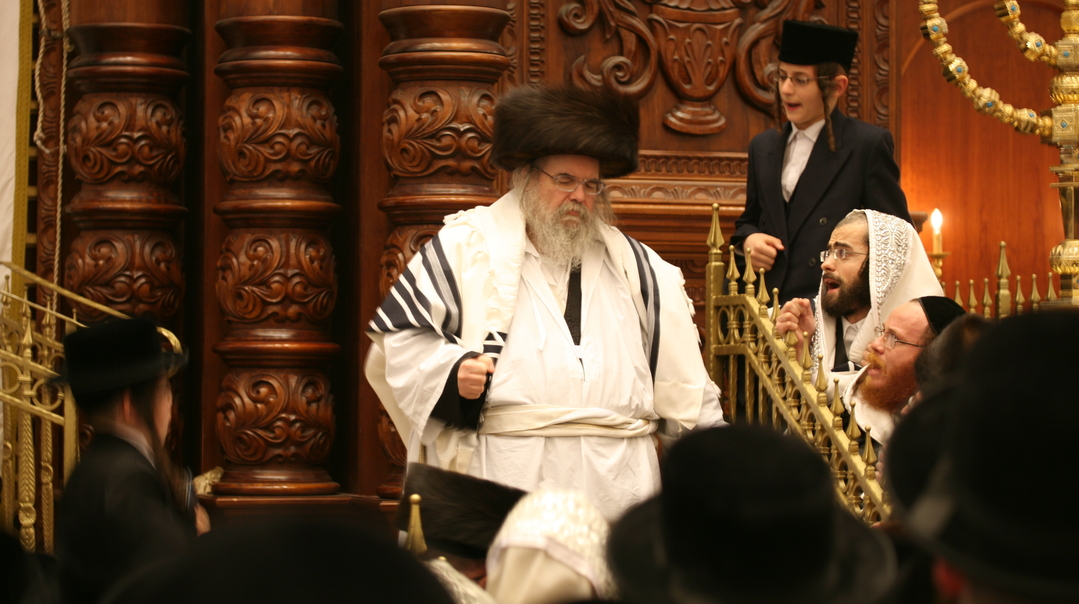Folk Hero

 I was never particularly blessed where zaidys are concerned; I was too young when both my grandfathers were niftar to remember them well. Nevertheless even though I’ve heard it ever so many times I still can’t listen to Moshe Yess’s song “My Zaidy” without reaching for the tissues. It’s an unassuming nostalgic song about a boy’s love for his zaidy whose death leads to the collapse of the family’s last ties to Yiddishkeit. But Yess somehow manages to condense the entire tragedy of American assimilation into the space of a few simple lyrics and then shoot it with an archer’s precision straight into the heart.
I was never particularly blessed where zaidys are concerned; I was too young when both my grandfathers were niftar to remember them well. Nevertheless even though I’ve heard it ever so many times I still can’t listen to Moshe Yess’s song “My Zaidy” without reaching for the tissues. It’s an unassuming nostalgic song about a boy’s love for his zaidy whose death leads to the collapse of the family’s last ties to Yiddishkeit. But Yess somehow manages to condense the entire tragedy of American assimilation into the space of a few simple lyrics and then shoot it with an archer’s precision straight into the heart.
My Zaidy was also the title of the first album produced by Megama the duo of Yess and his partner Shalom Levine. This January marked two years since Yess’s passing at the too-young age of 65 and Levine passed away but a few weeks ago — shortly after making his contribution to a new double CD featuring 25 of Moshe Yess’s most beloved songs. Entitled The Yess Legacy and produced by Gershon Veroba and Yerachmiel Ziegler it offers fresh yet faithful takes on many Yess standards performed by an all-star lineup who largely performed for free in honor of Yess.
But who exactly was the real Moshe Yess? Who was this guitar virtuoso who composed and sang so many Jewish classics and influenced an entire generation of singers and songwriters?
A New Direction Yess was able to appeal to all segments of the Jewish spectrum from the nonreligious to the chareidim because he had known both lifestyles himself. Born Morris Arthur (Moshe Aharon) Yess in Canada in 1945 his own zaidys were born inRussia. His parents were born inCanada and his mother was a cousin of the novelist Mordecai Richler.
When he was in his 20s his prodigious musical talent led him to the West Coast where he played — and often soloed — with a number of musical groups that achieved great prominence in secular America.
“He was influenced a lot by country music and bluegrass” says Gershon Veroba himself a well-known Jewish singer songwriter and producer. “That’s where he learned how to write a good lyric. He also knew jazz — several types of jazz — as well as rock pop classical guitar and flamenco.”
Flamenco?
“Yes flamenco” Veroba replies. “That’s one of the influences he followed and mastered to acquire that level of virtuosity on the guitar.”
Veroba became a friend of Yess’s during Megama’s first US tour when they performed atQueensCollegeduring Veroba’s student years. Rabbi Moshe Shur the director of the campus Hillel and former Diaspora Yeshiva band member arranged for Yess and Levine to stay in Veroba’s modest apartment. The three schmoozed and jammed. Yess and Veroba remained friends for many years.
Veroba recalls that Yess once told him that he reached a point in his glitzy secular career where he knew he couldn’t continue that secular music lifestyle. “He had bouts of deep conflict where he knew something had to happen” Veroba says. “He said he reached a crisis point when he was inLas Vegason a gig. He was alone in his hotel room and just started getting the shakes and he knew something had to change.… It wasn’t the last time deep emotional changes would affect him physically.”
Yess’s friend Rabbi Yosef Krupnik recounts that around that time Yess had been in contact with Rabbi Shlomo Cunin one of the original Chabad shluchim inLos Angeles. Cunin recognized that if Yess was to grow spiritually he needed to break away.
“Cunin felt that Yess needed to be as far as possible from his $2500-a-night gigs and from the entertainment world” Rabbi Krupnik says.
Rabbi Cunin persuaded Yess to turn his back on the tumah and go to Eretz Yisrael to enroll in a yeshivah for baalei teshuvah. Yess bought himself a one-way ticket perhaps indicative of his fear of backsliding and arrived inIsrael in 1978.
To read the rest of this story please buy this issue of Mishpacha. To sign up for a weekly subscription click here.
Oops! We could not locate your form.













